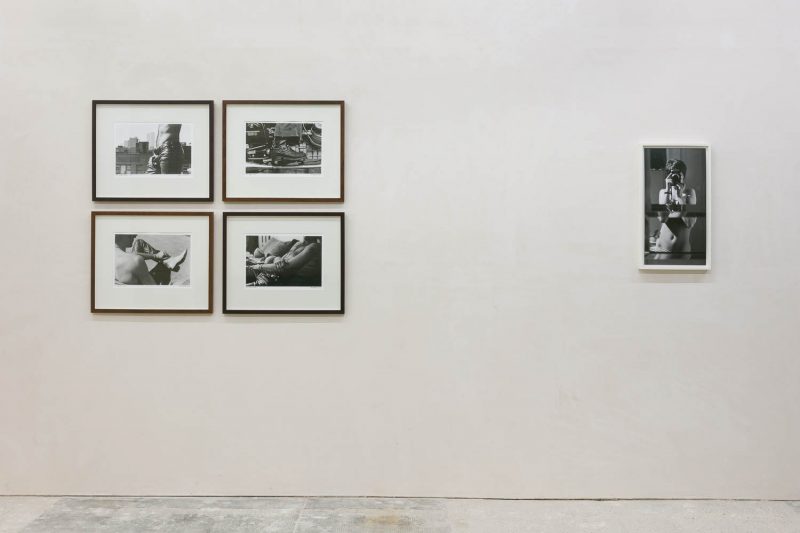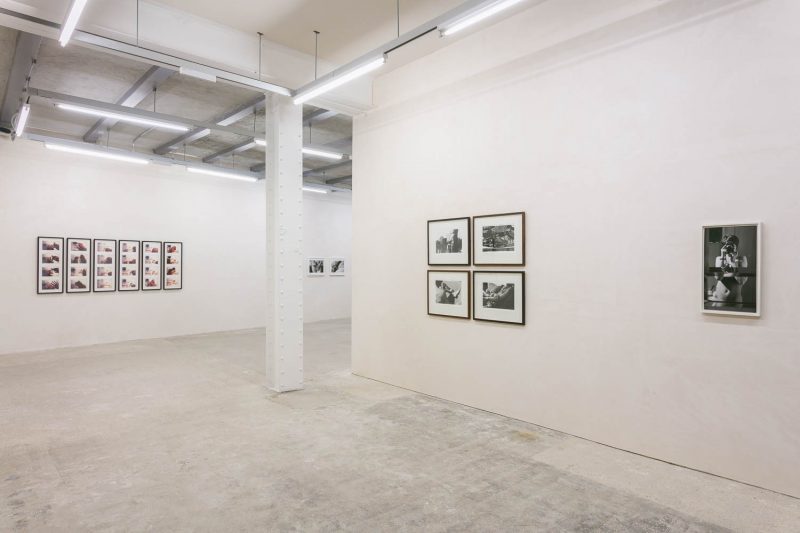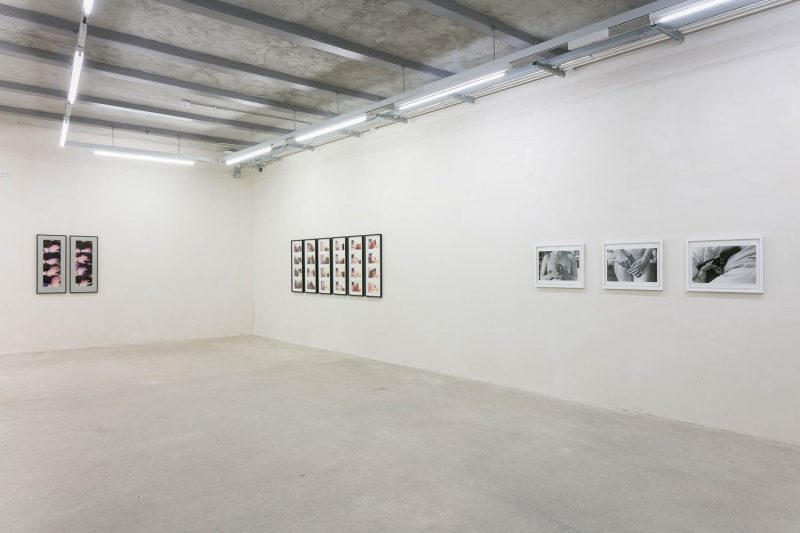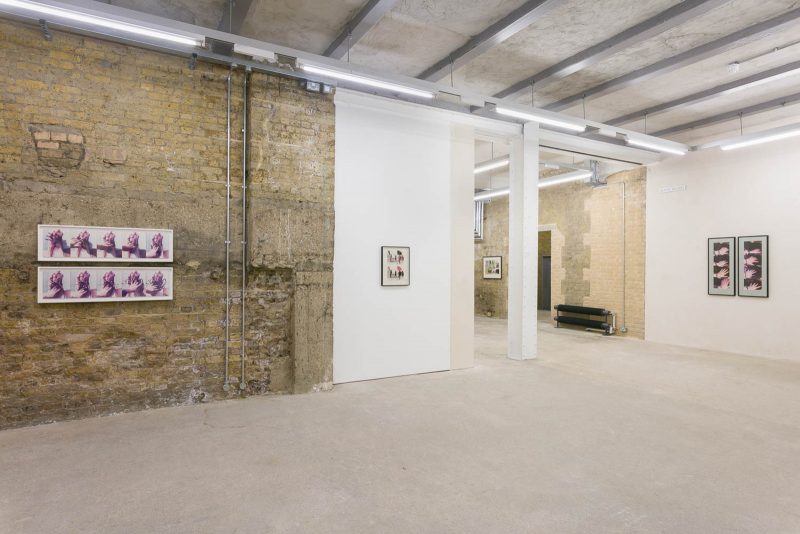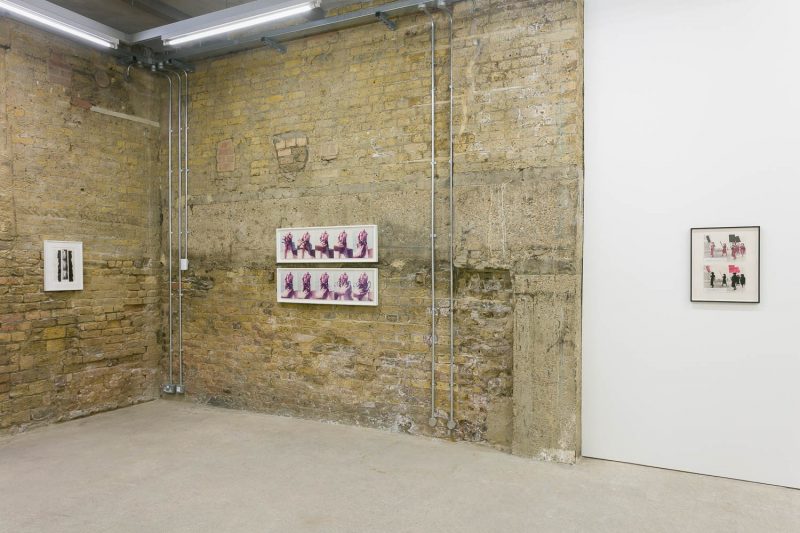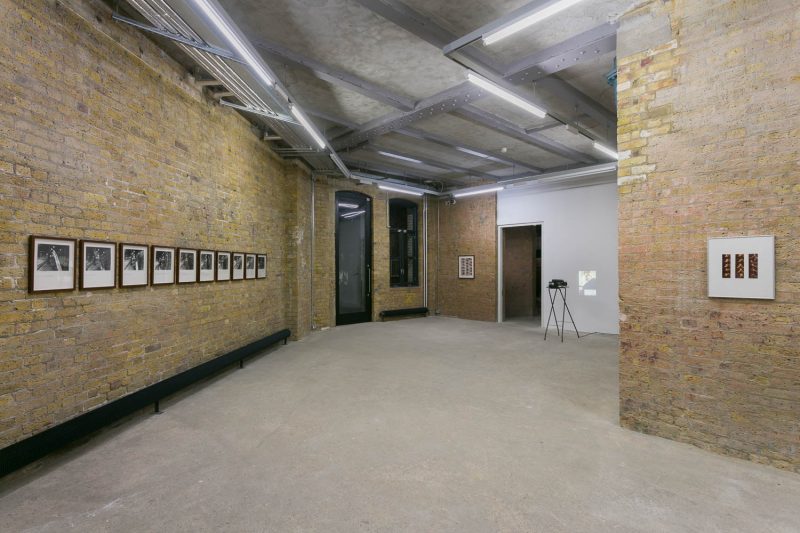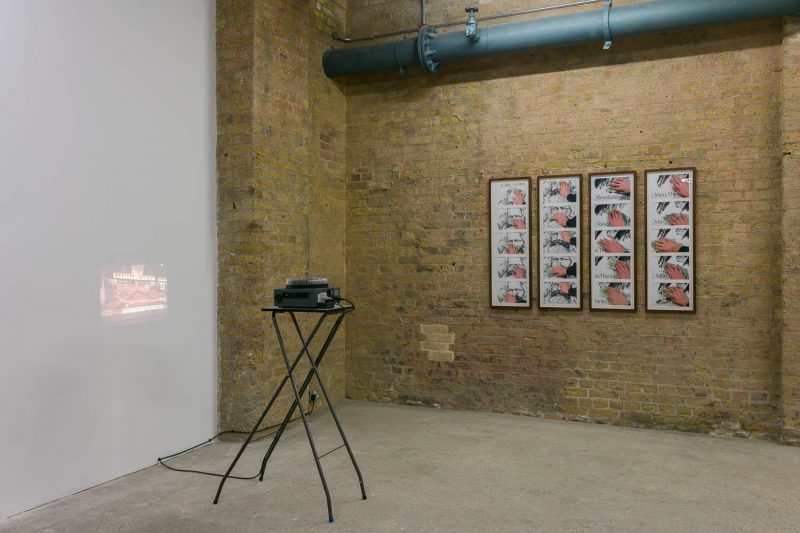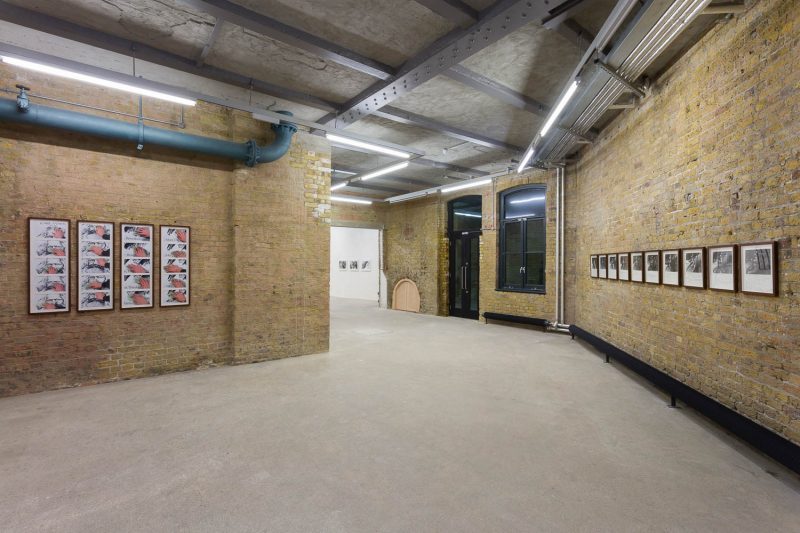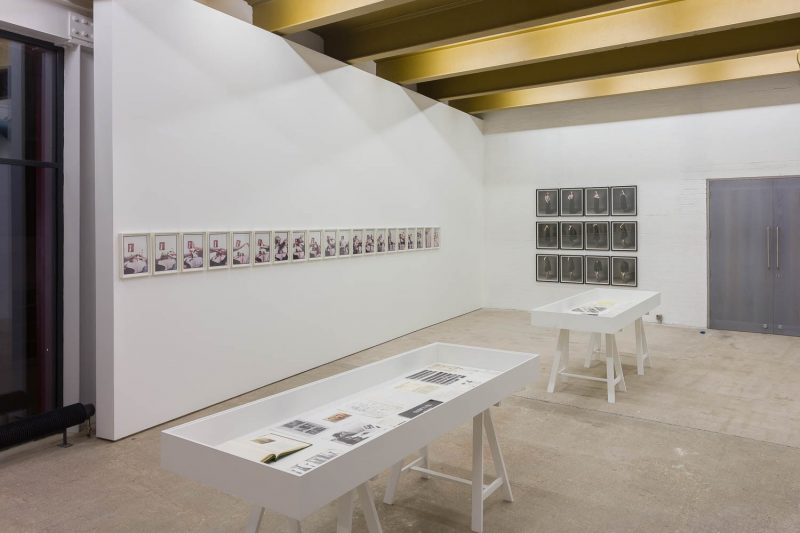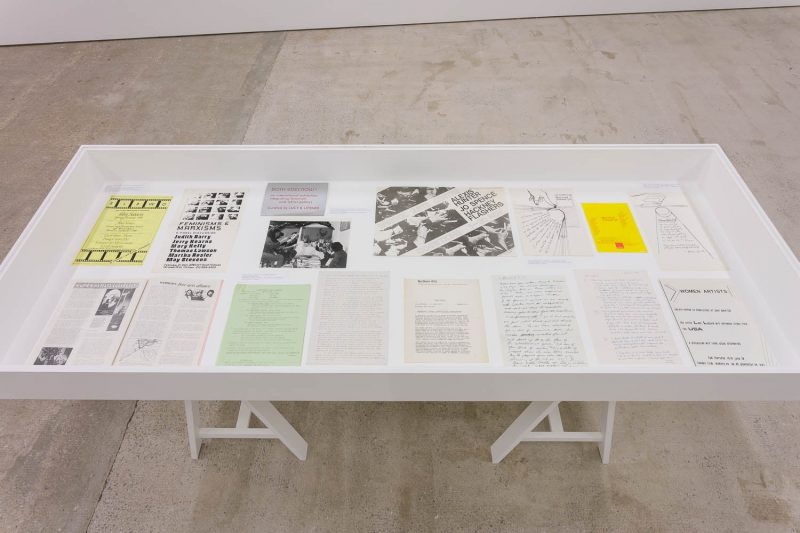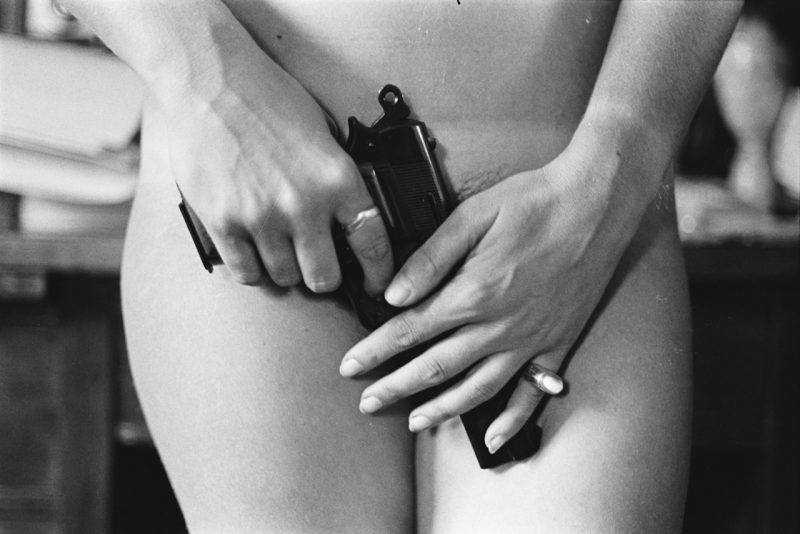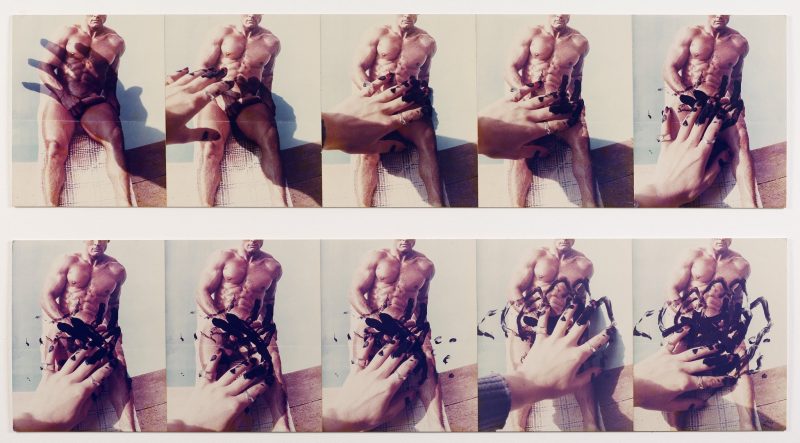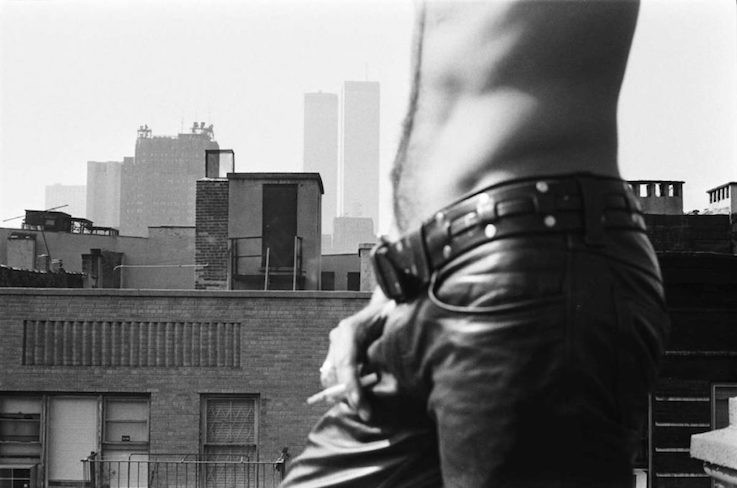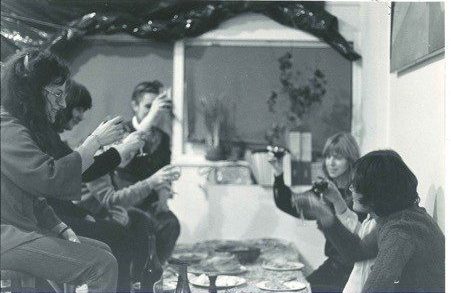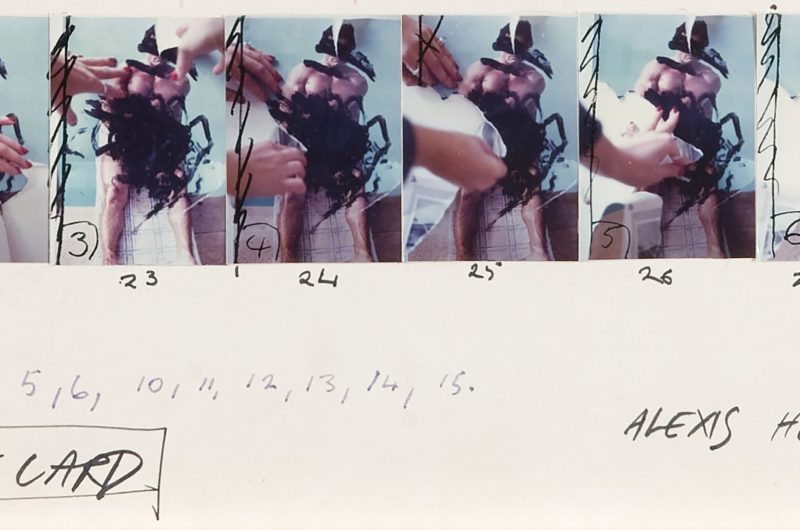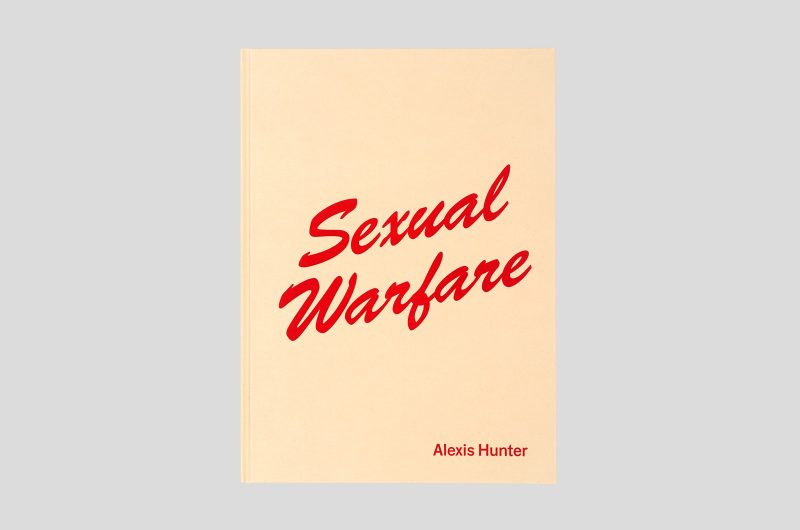ALEXIS HUNTER
Sexual Warfare
Sexual Warfare presented key work by Alexis Hunter (1948–2014) made between 1968–86. The first solo presentation of Hunter’s work in the UK since 2006, and in London since 1981, the exhibition brought her acerbic critique into dialogue with the contemporary moment and reinforced her importance both as an artist and a feminist.
An influential figure in the Women’s Art Movement in Britain in the 1970s, Hunter is best known for her staged photographic works in which she used the medium as a tool to manipulate normative power dynamics within society through gender role-play and fetishised objects. Her images draw upon the violence within capitalism’s abuse of gender stereotypes and sexuality for the pursuit of profit. As feminist discourse is reactivated with new concerns, and victims are presently afforded a visible platform, revisiting Hunter’s work after some four decades highlights a corresponding energy, anger and strength.
New Zealand born, Hunter moved to London in 1972 where she was an active part of The Women’s Workshop of the Artists Union, the founding of which recognised that “Women in art are subject of conscious and unconscious discrimination and the artworld in all its manifestations from gallery system to educational system is based totally upon a masculine identity…Women need to massively redress the massive disbalance which history has created…” The context of the 1970s for female artists was a challenging one. Hunter complained that she struggled to find photographic printers who would print her images, simply because she was a woman. Nonetheless, she achieved recognition for her ‘narrative sequences’ and was part of landmark exhibitions that fought to make space for the serious consideration of work by female artists; such as ‘Both Sides Now’, curated by Lucy Lippard, and the Hayward Annual 1978, which was the first to be curated by women and featured almost only female artists.
Hunter worked across painting and photography throughout her life, but during the 70s was specifically drawn to photography as a means for transmitting politicised feminist messages to a wider audience than that of the art world. Her images militate the commercial language of magazines and advertising. This is most directly felt in the Approach to Fear (1976-77) series which picture hands – nails red lacquered – perform various actions that confound gendered expectation. Compositionally, these could be your own hands, directly implicating the viewer in the work. The exhibition includes a presentation of lecture slides found in Hunter’s archive. She collected images of magazine pages advertising commodities aimed at women, most of them feature the same immaculate red finger nails. Other’s show how misogyny was a key strategy in advertising targeting men.
Items from Alexis’s archive and the Women’s Art Library were shown alongside the artworks. These include sketches for the staging of photographs, contact sheets, notes, slides, articles, books and illustrations that outline Alexis’ process of composition, sense of humour, and investment in the professionalisation of women’s art and its preservation. Both of the latter points are highly politicised acts when viewed with a regard for the context within which women were making art at the time – against a male dominated canon and with very little opportunity for exhibition or museum acquisition. Also shown are feminist magazines, and flyers for events Hunter visited, the latter of which demonstrate a solidarity between the perceived predominantly white feminist movement, and women of colour.
A specially commissioned publication was produced on the occasion of the exhibition featuring essays by Dr Althea Greenan, Special Collections Curator at the Women’s Art Library and Amy Tobin, Lecturer in the History of Art. Curator of Exhibitions, Events and Research at Kettle’s Yard.
BIOGRAPHY
Alexis Hunter (1948 – 2014) was born in Auckland, New Zealand and attended Elam School of Fine Arts, Auckland (1966-69). She moved to London in 1972 where she joined the Women’s Workshop of the Artists Union and remained here until her death in 2014. She was an active and influential figure in the feminist art movement in Britain in the 1970s. Since 2006 her photographs have been introduced to a new generation and have been shown in the Norwich Gallery, WACK! Art and the Feminist Revolution in the United States and in the Cologne Art Fair in Germany. Hunter’s work is represented in the Scottish National Gallery of Modern Art, Museum of New Zealand Te Papa Tongarewa, University of Otago and the Arts Council of Great Britain collections.
SUPPORTED BY
Supported by the Alexis Hunter Estate, Simon Bishop, and the Alexis Hunter Exhibition Circle.
Sexual Warfare presented key work by Alexis Hunter (1948–2014) made between 1968–86. The first solo presentation of Hunter’s work in the UK since 2006, and in London since 1981, the exhibition brought her acerbic critique into dialogue with the contemporary moment and reinforced her importance both as an artist and a feminist.
An influential figure in the Women’s Art Movement in Britain in the 1970s, Hunter is best known for her staged photographic works in which she used the medium as a tool to manipulate normative power dynamics within society through gender role-play and fetishised objects. Her images draw upon the violence within capitalism’s abuse of gender stereotypes and sexuality for the pursuit of profit. As feminist discourse is reactivated with new concerns, and victims are presently afforded a visible platform, revisiting Hunter’s work after some four decades highlights a corresponding energy, anger and strength.
New Zealand born, Hunter moved to London in 1972 where she was an active part of The Women’s Workshop of the Artists Union, the founding of which recognised that “Women in art are subject of conscious and unconscious discrimination and the artworld in all its manifestations from gallery system to educational system is based totally upon a masculine identity…Women need to massively redress the massive disbalance which history has created…” The context of the 1970s for female artists was a challenging one. Hunter complained that she struggled to find photographic printers who would print her images, simply because she was a woman. Nonetheless, she achieved recognition for her ‘narrative sequences’ and was part of landmark exhibitions that fought to make space for the serious consideration of work by female artists; such as ‘Both Sides Now’, curated by Lucy Lippard, and the Hayward Annual 1978, which was the first to be curated by women and featured almost only female artists.
Hunter worked across painting and photography throughout her life, but during the 70s was specifically drawn to photography as a means for transmitting politicised feminist messages to a wider audience than that of the art world. Her images militate the commercial language of magazines and advertising. This is most directly felt in the Approach to Fear (1976-77) series which picture hands – nails red lacquered – perform various actions that confound gendered expectation. Compositionally, these could be your own hands, directly implicating the viewer in the work. The exhibition includes a presentation of lecture slides found in Hunter’s archive. She collected images of magazine pages advertising commodities aimed at women, most of them feature the same immaculate red finger nails. Other’s show how misogyny was a key strategy in advertising targeting men.
Items from Alexis’s archive and the Women’s Art Library were shown alongside the artworks. These include sketches for the staging of photographs, contact sheets, notes, slides, articles, books and illustrations that outline Alexis’ process of composition, sense of humour, and investment in the professionalisation of women’s art and its preservation. Both of the latter points are highly politicised acts when viewed with a regard for the context within which women were making art at the time – against a male dominated canon and with very little opportunity for exhibition or museum acquisition. Also shown are feminist magazines, and flyers for events Hunter visited, the latter of which demonstrate a solidarity between the perceived predominantly white feminist movement, and women of colour.
A specially commissioned publication was produced on the occasion of the exhibition featuring essays by Dr Althea Greenan, Special Collections Curator at the Women’s Art Library and Amy Tobin, Lecturer in the History of Art. Curator of Exhibitions, Events and Research at Kettle’s Yard.
BIOGRAPHY
Alexis Hunter (1948 – 2014) was born in Auckland, New Zealand and attended Elam School of Fine Arts, Auckland (1966-69). She moved to London in 1972 where she joined the Women’s Workshop of the Artists Union and remained here until her death in 2014. She was an active and influential figure in the feminist art movement in Britain in the 1970s. Since 2006 her photographs have been introduced to a new generation and have been shown in the Norwich Gallery, WACK! Art and the Feminist Revolution in the United States and in the Cologne Art Fair in Germany. Hunter’s work is represented in the Scottish National Gallery of Modern Art, Museum of New Zealand Te Papa Tongarewa, University of Otago and the Arts Council of Great Britain collections.
SUPPORTED BY
Supported by the Alexis Hunter Estate, Simon Bishop, and the Alexis Hunter Exhibition Circle.
Read Less...
